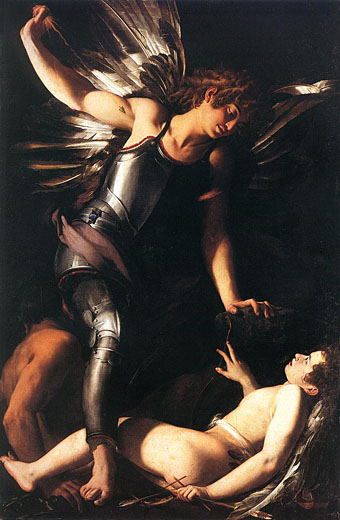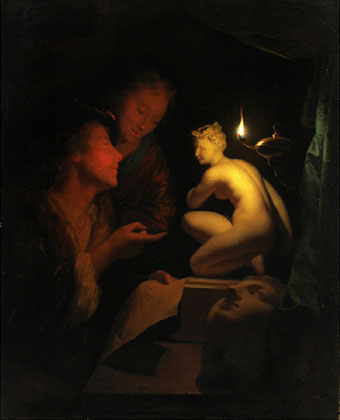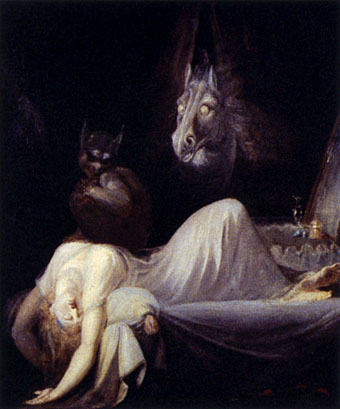Heavenly Love and Earthly Love by Giovanni Baglione (1602–1603).
Chiaroscuro\, Chia`ro*scu”ro\, Chiaro-oscuro\, Chi*a”ro-os*cu”ro\, n. [It., clear dark.] (a) The arrangement of light and dark parts in a work of art, such as a drawing or painting, whether in monochrome or in colour. (b) The art or practice of so arranging the light and dark parts as to produce a harmonious effect.
Following from the earlier post about shadows in art, some favourite examples by masters of chiaroscuro. Another artist not represented here will be the subject of a post of his own in the next couple of days. The Dutch painter Godfried Schalcken (below) was the subject of the horror tale Schalcken the Painter by Joseph Sheridan Le Fanu, a story memorably filmed by Leslie Megahey for BBC television in 1979. Horror and the chiaroscuro effect belong together, as Fuseli’s Nightmare demonstrates, and many of Schalcken’s paintings seem even more curious and sinister after you’ve read Le Fanu’s story.
Update: John Klima points us to Hal Duncan‘s excellent story, The Chiaroscurist, which you can read at Electric Velocipede.
David by Caravaggio (1600).
Two men examining a statue by candlelight by Godfried Schalcken (no date).
The Nightmare by Henry Fuseli (1791).
Previously on { feuilleton }
• Shadows at Compton Verney
• Vanitas paintings
• HP Lovecraft’s favourite artists
• Angels 1: The Angel of History and sensual metaphysics





Hey John, Hal Duncan wrote a story for me called “The Chiaroscurist” which I originally printed in Electric Velocipede and then reprinted in Logorrhea. Here’s a link to the full text:
http://www.electricvelocipede.com/htm/chiaro.htm
John Klima
Thanks John, that’s now noted above also!
20th century chiaroscuro: watch Andrej Tarkovskij: Nostalghia, The Mirror(!), Andrej Rubljev, not Solaris; or: Nosferatu, The Cabinet of Dr. Caligari, Pandora’s Box…Metropolis, Eraserhead
by the way: check the spelling of “Fuseli”: Johann Heinrich Füssli (John Henry Fuessli)
Thanks, I have all the Tarkovsky films on DVD.
I use the Anglicised form of Fuseli’s name since that’s the form he used himself in the latter half of his life when he was living in London. He not only lived and worked here he was also an important member of the Royal Academy, becoming Professor of Painting there in 1806. Art books, museums, etc use the Anglicised form of his name so I follow their example.